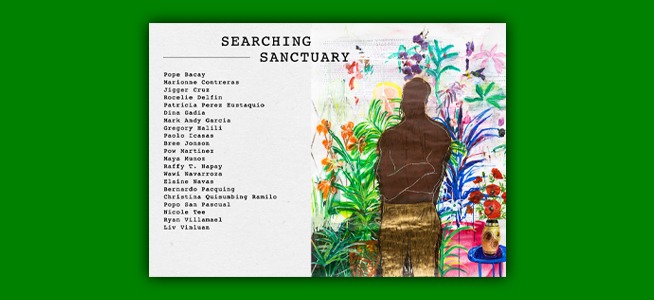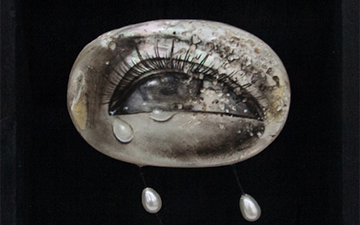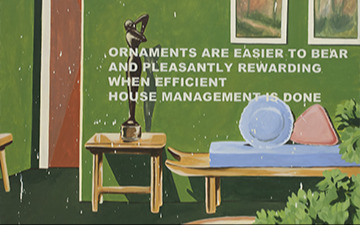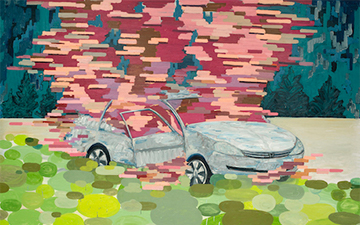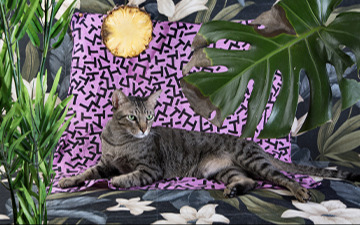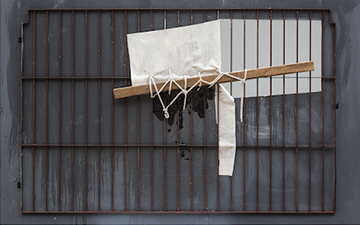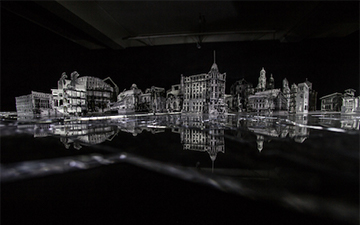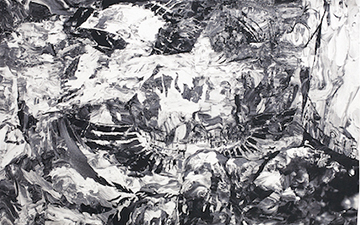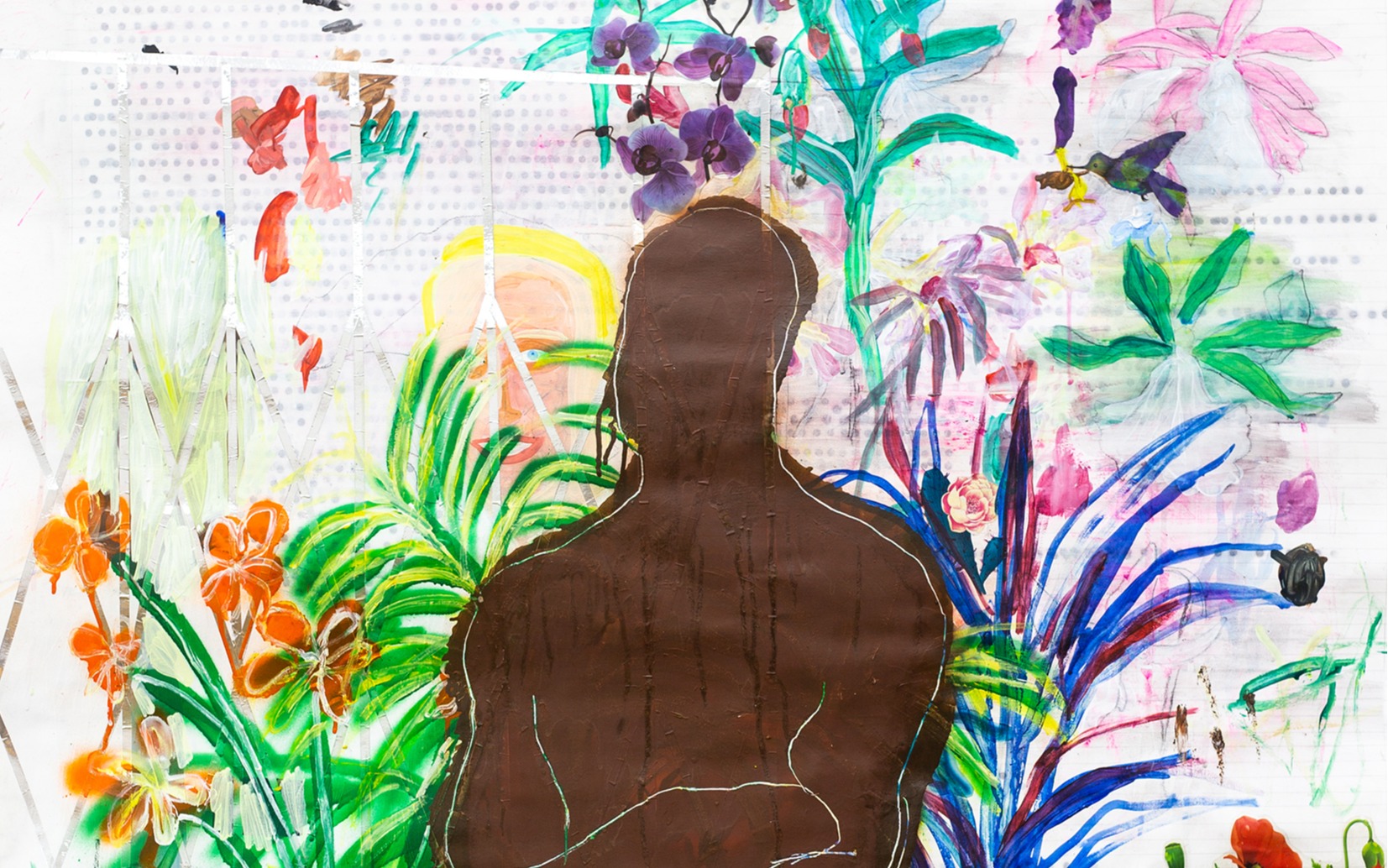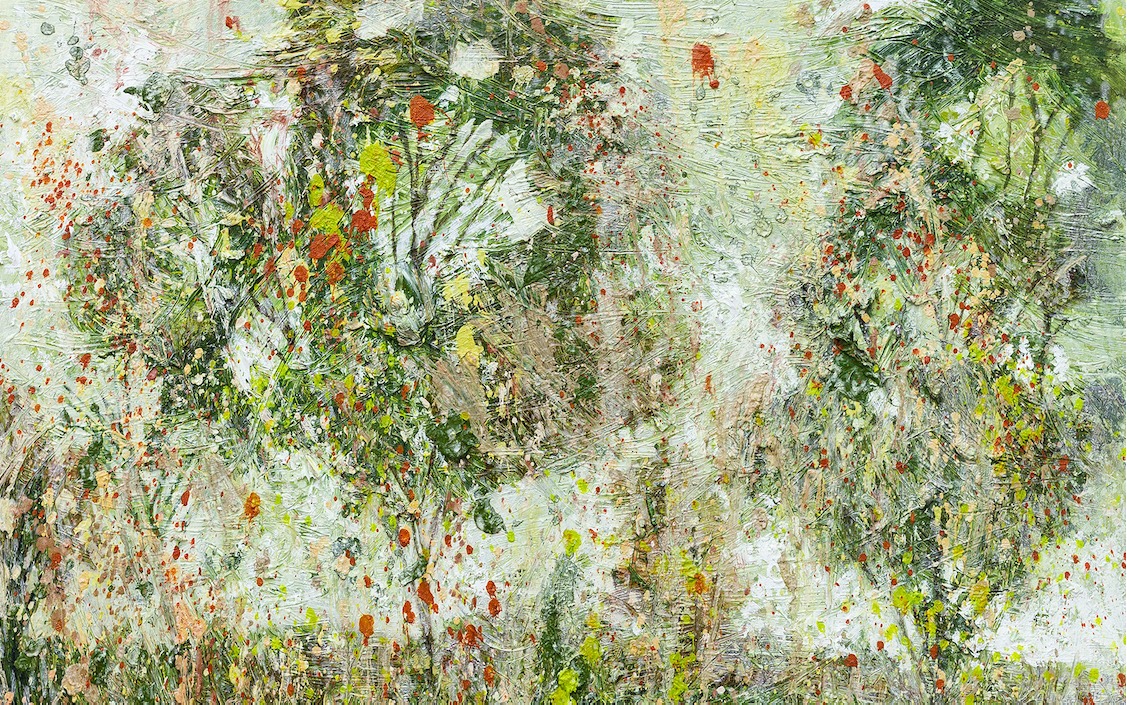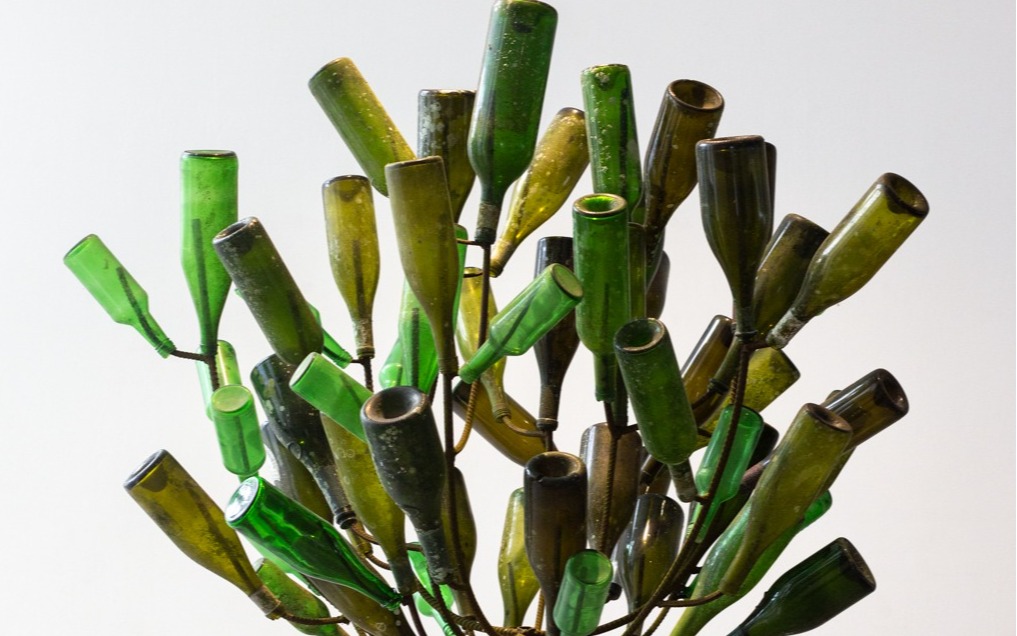
Searching Sanctuary
Gregory Halili, Patricia Perez Eustaquio, Dina Gadia, Bernardo Pacquing, Pow Martinez, Wawi Navarroza, Ryan Villamael, Mark Andy Garcia, Maya Muñoz, Raffy T. Napay, Elaine Navas, Christina Quisumbing Ramilo, Pope Bacay, Marionne Contreras, Jigger Cruz, Rocelie Delfin, Paolo Icasas, Bree Jonson, Popo San Pascual, Nicole Tee, Liv Vinluan
Curated By Gregory Halili
Silverlens, Manila
Installation Views
About
If the current state of environmental decline continues its destructive path, then inevitably, nature will only exist as a memory.
We live in a country blessed by natural abundance. Yet, we seem to believe that our resources are unlimited, depleting its wealth dry. In 1904, The Bureau of Forestry released the “The Forest Manual”, which contained the National Forest Act (No.1148) from the Philippine Commission pertaining to forest services and regulations. At this time, it is estimated that the Philippine forest cover was at 70%. Now, it is estimated that only 20% of the country’s forest remains.
Searching Sanctuary is the manifestation of ideas and inspiration, from 21 Filipina and Filipino artists, whose absolute purpose was to hunt, capture and preserve what is vanishing. The act of creating images of nature: of painting, of drawing, of photographing, of sculpting, is a profound expression of preservation.
The works are rich with organic and biomorphic forms, reflecting a language that is purely aesthetic, deep in context, and one that connects and understands our human nature. Each work of art acts as a seed to preserve a portrait of a fragile existence that one day may be lost to memory.
Words by Gregory Halili
Pope Bacay (b. 1994) articulates understandings of place in his oil and acrylic paintings of architectural structures and landscape views. His fascination for places seems to be firmly rooted in his childhood home in Oriental Mindoro. He fragments representations of this house in Roxas town by painting its various elements, paying keen attention to architectural details, all minutiae that make the firmaments of home. Once fragmented, he gathers them once more into painted replicas cloaked in stillness, against a backdrop that seems nowhere.
Bacay expands his quest for belonging by grounding reality in architectural form - balconies, pierced walls, shuttered windows, roof decks, the dull surface of concrete or the tedium of grill work. He chronicles his search for places by assembling a visual geography in the form of shaped canvases. His 2015 piece My Third Home is a striking example. The work takes on the semblance of a map yet is also understood as records of places the artist has seen, passed through or lived in. In this piece as well as his abstract landscapes in oil, one intuits he searches for locations where the self could belong, albeit temporarily. His first solo exhibition (t)here at Tin-aw Art Gallery in 2016 captures this journey in the immobile yet voluble vessel of architectural form.
Pope Bacay was born and raised in Oriental Mindoro, the Philippines. He graduated cum laude, studio arts from the College of Fine Arts, University of the Philippines Diliman.
Marionne Contreras (b. 1992) is a visual artist who works with an array of materials and media to produce a heterogeneity of output, from fiberglass sculptures to acrylic paintings on wood to assemblages to textile-based works. These are often with poetic themes of memory, intimacy, femininity, synthesis between fiction and reality.
There is always a personal narrative in Contreras’ works despite her conscious decision to highlight their ornamental nature, to always stage them as a showcase of beauty given the parameters in which the very idea of “the beautiful” is meant to work. This is evident in her Plant Series, first seen in her 2018 one-person exhibition in the Cultural Center of the Philippines entitled, A Collection Of Bruises, Curses, Baby Teeth, where her plant sculptures, in their contradicting structure: the concrete that weighs the softness of the textile mass down while propping it up, the fluidity of the framework that is meant to hold everything together, decoratively stood in a tableau as physical expressions of adoration.
In This Hole Feels Womb-like, Contreras’ 2019 one-person exhibition in Vinyl On Vinyl Gallery, through a continuation of her Plant Series and the sentiments they carry, Contreras not only presented beauty as an end in itself, but described the futility in the labor-intensive attempt of its creation which she humanly rectified by introducing excess.
Contreras’ Plant Series is a mortal effort to replicate a beauty that is ideal — one that is a product of unknowable laws of nature. She continues with her series aware that her every replication will always be ‘almost’ but never ‘is’.
Jigger Cruz (b. 1984) explores the primitive memory of the figurative in contemporary painting. The paintings rework many of the stylistic quirks and formal concerns of classical painting, employing their basic composition and approximating their processes. His pursuit of the idea that a painting is also an installation results in exposing the canvas stretcher bars and revealing all aspects and surfaces in the final artworks.
The figures from classical paintings that appear beneath remind the viewer of the laborious painting activity as well the art historical baggage of the contemporary painter.
Jigger’s artistic approach plays with ideas of defacement and vandalization. The traditional painted landscapes that are visible underneath Cruz’s layers of pastos oil and spray paint give the impression that an Old Master painting having been destroyed. The destruction of these figures becomes integral to our aesthetic understanding of the piece. His paintings become assemblages of recognizable objects and obscure shapes which interlace, envelope and unfurl within one another.
Rocelie Delfin’s (b.1977) raw, poetic images often recall the remote areas of Lanao del Norte where she grew up: lush forests, flowing rivers and unnamed islands. Details of rocks, birds and plants are patiently and meticulously rendered with hundreds of miniscule lines and strokes, a process that she developed intuitively. She puts pen and ink to paper, drawing purely from memory and imagination. Some of these plants and trees are fictional constructs, as if they are from fairytales or strange lands. These drawings carry the distinct tension of simple happiness, freedom and spontaneity layered with obsessive and laborious execution. They emanate from authentic expressive impulses often associated with art brut.
Patricia Perez Eustaquio (1977) was born in Cebu, Philippines. She is one of the leading artists of her generation. Known for her works that span across different mediums and disciplines–from paintings, drawings, and sculptures, to the fields of fashion, décor, and craft, Eustaquio reconciles these intermediary forms through her constant exploration of notions that surround the integrity of appearances and the vanity of objects.
A recipient of the Cultural Center of the Philippines’ Thirteen Artists Awards, Eustaquio has also gained recognition through several residencies abroad, including Art Omi in New York and Stichting Id11 of the Netherlands. She has also been part of many notable exhibitions locally and abroad, such as The Vexed Contemporary in Museum of Contemporary Art and Design, Manila; Volta Basel in Basel, Switzerland; and Credit Suisse’s Chimera in Singapore Art Museum, Singapore. She has exhibited at the Palais de Tokyo in Paris and was part of the 2016 Singapore Biennale. Her recent exhibitions include Everywhere West, Everything East in Yavuz Gallery, Sydney (2019) and West Bund Art and Design, Shanghai (2018).
Dina Gadia’s (b. 1986) artistic practice spans collage, paintings, and textile. Most noted for her comic book aesthetics, Gadia’s works play with signs and language culled from popular printed matter. Featuring collaged realities and altered bodies, Gadia’s approach to her practice involves a deft handling of cut-up elements disposed in unorthodox settings. These then brings about the distortion and détournement of its content into discomfiting subject matters such as gender issues and sexuality, fine art and lowbrow culture, among others.
Gadia was born in Pangasinan, Philippines. She received her bachelor’s degree of Fine Arts Major in Advertising and Design from Far Eastern University. She has exhibited extensively since 2005 and has had solo and group exhibition in New York, Miami, Taipei, Singapore, and Tokyo. Gadia was shortlisted twice in the Ateneo Art Awards, first in 2012 for her Regal Discomforts (2011, Blanc, Manila) solo exhibition and most recently in 2018 for her Situation Amongst the Furnishings (2017, Silverlens, Manila). In 2018, she was also awarded the 13 Artists Awards of the Cultural Center of the Philippines. Gadia showcased her work in the group exhibition City Prince/sses at Palais de Tokyo in 2019.
Mark Andy Garcia’s (b.1984) anti-trend, painterly style serves to impart emotional honesty to paintings that operate like entries in journals. His various one-man shows since 2008 have detailed his life as an overseas contract worker in Saudi Arabia, laid bare his emotional anguish over the passing of his father, and operated as keepsakes of memories of his daily life. These bring out various intense transformative experiences and also more ordinary, blissful moments. His approach towards painting has something of a child-like sincerity to it, charged with an undercurrent of religious intensity that churns both his content and brushwork, whether for lighter or darker autobiographical periods, and to portray joy or despair.
Garcia graduated with a Bachelor of Fine Arts major in Advertising from the Technological University of The Philippines, Manila, in 2005. He is also the recipient of many awards such as the Grand Prize for 2007 Metrobank Art and Design Excellence, the National Art Competition (Oil Painting Category); Juror’s Choice Award of Excellence, 2008 Philippine Art Awards National. He was one of the recipients of the 2015 Thirteen Artists Award by the Cultural Center of the Philippines.
Paolo Icasas (b. 1981) has veered away from the traditional rural landscapes, usually with accompanying representation of Filipino peasant life, but kept similar sentiments by painting scenes from the locales where he resides and works. His paintings are inspired by work, often manual labor, by the daily struggles of the common man, by the uncertainties that always go with living, and by man’s universal longing for rest.
We were first introduced to Paolo Icasas’ darkly lit landscapes in Life Jacket Under Your Seat (2016), an exhibition with Surrounded By Water in Jogjakarta, Indonesia, which was re-exhibited in Blanc Gallery shortly after.
His landscapes were of vacant lots, which he sees as a parallel to manual laborers and the humility of their nature of work, one that does not demand any applause. Having taken over the responsibilities of his late father, particularly being the one in charge of his family’s small construction business, taking his father’s workers under his care, he does not remain an observer but participates in his paintings’ narrative.
His recent works, which revolve around themes of rest and uncertainty, have less urban elements than before. This is influenced by the shift of his place of work from the city to a provincial setting. Still, his landscapes remain strange yet familiar, a place that perhaps one has gone before in life or in a dream, invoking a feeling, a memory, evoking a yearning for home or what used to be such.
Notable are his large-sized paintings, immersive in scale and lushly tactile in texture, with thick strokes and heavy smears of oil paint, sometimes infused with ground charcoal, rough, relief-like. These, he has previously shown in one-man exhibitions in The Cultural Center of The Philippines and Blanc Gallery respectively.
Bree Jonson (b. 1991) received her degree in Industrial Engineering at Ateneo de Davao University in 2012, dismayed by the mechanization of people in factories where she did her thesis in, she found herself becoming an artist afterwards, as a way to feel, live and create. She sought refuge in the natural world around her, influenced by her veterinarian mother and the wild-life filled province she spent her childhood in.
She initially started painting hunting scenes of land animals, interested in the dynamics of the natural world and the insights this provides into everyday life. She says of her work, that they compare to modern day fables, except that they have no endings, no lessons, but are observed instances in human life and psyche, which are at times satirical, problematic, even hopeful. In doing works about flora and fauna, she wants to bridge the gap between environment and the collective personal, to combat the prevailing notion that nature and environment are merely surrounding decoration as opposed to home and belongingness. With her works, she wants to reinstill the ‘interconnectedness’, man in nature, and nature in man.
She has since then expanded to sexuality and body politics with a new series of underwater creatures, where various flower like fauna are reimagined to have mouths that resemble different bodily orifices, and are seen fighting, eating, or awaiting for prey. She is also working on a long durational project entitled: Extinction of Experience, wherein she paints extinct, or almost extinct species that are endemic in particular regions, to reimagine them in their natural habitat, to bring them back to life.
Bree Jonson lives and works in Metro Manila, Philippines.
Pow Martinez (b. 1983) is a recipient of the Ateneo Art Awards for his 1 Billion Years exhibition at West Gallery, Philippines. He exhibits internationally and has worked with different media, including sound. His recent exhibitions include City Prince/sses (2019) at Palais de Tokyo in Paris; Art Jakarta 2019 with Silverlens and ROH Projects; 50 Years in Hollywood (2019) at Pinto Art Museum in New York; Art Basel Hong Kong 2019 with Silverlens; WXXX (2019), West Gallery, Manila; Art Taipei 2017; WASAK! Reloaded (2016) in Arndt, Singapore; and WASAK! (2016) in Arndt, Berlin. Martinez has also held a number of solo shows in major galleries in Manila, the most recent of which is Techno-Utopian (2017) in SILVERLENS. Early in 2018, Martinez had his first solo exhibition in Indonesia. Titled Aesthetic Police, the exhibition is an outcome of his month-long residency program at OPQRStudio in Bandung. He will be having 6th solo exhibition in Silverlens in April 2020.
Martinez’ paintings belie their grotesque subject matter with the inbelibly beautiful surfaces and a wide-ranging, daring use of color. Mutants, monsters, demons, deviants, and freaks lurch, sit, and appear to transform amidst weirdly lit landscapes or disintegrating urban scenarios, or emerge from a painterly graffito mess, but, as his more abstracted works insist, Martinez' ability to render intriguing relationships between forms and surfaces ensure his works are endlessly compelling—an experience akin to a beautiful nightmare.
Pow Martinez lives and works in Manila, Philippines.
Maya Muñoz (b. 1972) was born in Albay province in the Bicol region, Philippines. As a mixed media artist, her works tend to be figurative and expressive and, at other times, abstract and minimal. She has a studio in both Manila and her hometown province of Albay as she considers both places her creative source, between the volcanic landscape and the sea and the chaotic buzz of Manila. She deems herself reclusive and her creative psyche forever rooted in this unpredictable and mercurial landscape.
Muñoz is a graduate of San Jose State University, California, USA. She has participated in numerous group shows in the Philippines, Singapore, UAE, China and the USA. She has been collected in Indonesia, France, Singapore, Philippines, United States, Portugal, amongst others. In 2006, she was awarded the prestigious 3rd Ateneo Art Award, Philippines and in 2010 presented Extensions, a monumental solo exhibition at Lopez Museum, Philippines.
Raffy T. Napay (b. 1986) graduated from Eulogio Amang Rodriguez of Science and Technology (EARIST) in 2009 with a Fine Arts degree. Whilst in school, he started gaining recognition for his skill. He was one of ten finalists in the Philippine Art Awards in the national capital region in 2007, 2009 and 2011. In 2008, he won the Metrobank Art & Design Excellence Award. In 2008, 2012 and 2014, he was awarded the Juror’s Choice Award of Excellence at the Philip Morris Philippine Art Awards on the national level, considered by many as a staggering achievement.
Napay originally used oil paints, until he developed an adverse allergy to the medium. Whilst recovering, he explored the potential of other materials, and explored working with the available threads and textiles at home. Growing up with a seamstress mother, Napay was exposed to a wide variety of threads, cotton and fabrics and these materials gave him a strong ground into a different world of creativity. The artist realized the creative process, was quite similar - from early conceptualization to finishing touches on an artwork. His threaded works demanded just as much time and attention to detail as paintings. Now equipped with a needle for a brush, thread and fabric as his paint, the artist approaches his canvas as he would a painting. His composition stays true whilst playing with shadow and light, in effect transcending any intuitive boundary between painting and creating a tapestry. In 2013, Napay was awarded the prestigious Ateneo Art Award, emerging as winner in the Contemporary Artists category, besting artists from all over the Philippines.
Napay’s early works are whole yet intrinsically personal, drawing inspiration from his family, surroundings and experiences. The award granted Napay two artist–in-residence programmes at both Liverpool Hope University in the United Kingdom, and at Artesan Gallery + Studio in Singapore. He has held several solo exhibitions since, including a solo presentation at Art Stage Singapore with Artesan Gallery in January 2015, and a solo exhibition entitled Sanctuary at the Ateneo Art Gallery. In October 2015, Napay won first prize in the much coveted Il Lorenzo Magnifico art awards at the 10th Florence Biennale in Italy.
Wawi Navarroza (b. 1979) is a multi-disciplinary Filipino contemporary artist known for her works in photography, actively exhibiting in galleries and museums both in the Philippines and internationally. Her approach to photography is malleable, with a focus on exploring Self and Surrounding as seen in her works in contemporary landscape, constructed tableaus and self-portraits. Informed by crises and natural disasters, her works transmute personal experience to the symbolic, probing locations and constant movement, finding the Self with and in the surroundings which then are abstracted in the artist’s studio; all these perhaps to mirror a path to understanding a deeper sense of place and identity.
She studied photography in De La Salle University, Manila, mentored by conceptual artist Judy Freya Sibayan. She attended continuing education at the International Center of Photography, New York City with a Fellowship grant award from the Asian Cultural Council and finished her Masters with a scholarship award from Instituto Europeo di Design in Madrid. She has received numerous awards and is a recipient of the CCP Thirteen Artists Award, Ateneo Art Awards, and finalist at Lumi Photography Award Helsinki and Sovereign Asian Art Prize, to name a few.
Her art has been surveyed in major publications such as “Photography Today" (Phaidon) and “Contemporary Photography in Asia” (Prestel). She has published two of her books “DOMINION” and “Hunt & Gather, Terraria” and continues to advocate for the printed format through her founding of THOUSANDFOLD in 2015, an artist-run platform dedicated to the production and promotion of Philippine contemporary photography and photobooks in Manila, Philippines.
In the past few years, she has based herself back and forth Madrid and Manila. Currently, Wawi Navarroza is working and living in Manila, Philippines.
Elaine Navas (b. 1964) completed Bachelor of Arts in Psychology from the Ateneo de Manila University in 1985 prior to taking up her second degree from University of the Philippines College of Fine Arts, graduating with a Bachelor of Fine Arts majoring in Painting in 1991. Navas was the recipient of Honorable Mention (2004, 2002) from Philip Morris Singapore Art Awards, Honorable Mention (1995) from Philip Morris Philippine Art Awards, and Juror’s Choice (1995, 1994) from the Art Association of the Philippines.
Bernardo Pacquing (b. 1967) continues to approach the expressive potential of abstraction in painting and sculpture through the use of disparate found objects that confront and disrupt perceptions of aesthetic representation, form, and value. By focusing on the organic shapes of visual reality, his work displaces notions of indisputable forms and opens possibilities for coexisting affirmations and denials.
Pacquing was born in Tarlac, Pampanga. He graduated from the University of the Philippines College of Fine Arts in 1989 and was twice awarded the Grand Prize for the Art Association of the Philippines Open Art Competition (Painting, Non- Representation) in 1992 and 1999. He is also a recipient of the Cultural Center of the Philippines Thirteen Artists Award in 2000, an award given to exemplary artists in the field of contemporary visual art. Pacquing received a Freeman Fellowship Grant for a residency at the Vermont Studio Center in the United States.
Christina Quisumbing Ramilo (b. 1961) examines and reimagines objects and their contexts through comprehension of material and site specificity. Her artistic practice involves an interest in and respect for the life and history of objects. With minimal intervention on their surfaces, she arranges them or reconfigures their parts, presenting other perspectives to their forms and functions. Often using unconventional materials (construction discards, architectural fragments, casts, recycled paper), and utilizing objects themselves as material (mirrors, bottles, old frames, clothing), most of which have been collected for years, she constructs the works in parts over long periods of time, never completely finished. Conferred with titles that employ wit and humor, they ultimately express her personal poetries.
Ramilo lives and works in the Philippines as a full-time artist and curator.
Popo San Pascual (b. 1964) studied Fine Arts at the University of the Philippines major in Painting under Roberto Chabet. He worked as an apprentice to master printmaker Gianfranco Gorini in Venice, Italy and American artist David Webster in Paris, France. In 1988, he was a recipient of the 13 Artists Awards granted by the Cultural Center of the Philippines.
Popo San Pascual currently lives and works in Tagaytay City, Philippines.
Nicole Tee (b. 1993) lives and works in Metro Manila, Philippines. Her works explore “the everyday” – the banal and mundane, as well as “the extraordinary, the surreal, the surprising, and the magical”. She uses various traditional and unconventional media, like textile and thread, collage, painting, multimedia, and installation, to translate her surroundings, activities, and experiences into her works.
In 2016, she graduated cum laude from the College of Fine Arts of the University of the Philippines, where she received an Outstanding Thesis Award for her work Quiet Punctuations, an intermedia installation. She was also shortlisted in the Ateneo Art Awards 2017 for the same work. She has participated in several group shows and has presented solo exhibitions in galleries around Metro Manila.
Ryan Villamael (b. 1987) was born in Laguna. He is one of the few artists of his generation to have abstained from the more liberal modes of art expression to ultimately resort to the more deliberate handiwork found in cut paper. While his method follows the decorative nature innate to his medium of choice, from the intricately latticed constructions emerge images that defy ornamental patchwork found in the tradition of paper cutting, and instead becomes a treatise of a unique vision that encompasses both the inner and outer conditions that occupy the psyche – which range from the oblique complexity of imagined organisms to the outright effects of living in a convoluted city.
Villamael was included in several group shows while still pursuing a bachelor’s degree in painting from the university of the philippines up to the time of his graduation in 2009. His works have been shown in manila, singapore, hong kong, the uk, australia, and paris. Although his persistence in sustaining a discipline more often subjected to handicraft has been evident from his works, villamael maintains that his primary interest lies rather on the conceptual significance of craft in the process of creating contemporary art, and continues to recognize the possibility of how his works can still evolve under this light.
He is a recipient of the Ateneo Art Award in 2015 and the three international residency grants funded by the Ateneo Art Gallery and its partner institutions: La Trobe University Visual Arts Center in Bendigo, Australia; Artesan Gallery in Singapore and Liverpool Hope University in Liverpool, UK. He has participated in the 2018 Biwako Biennale in Japan, and 2016 Singapore Biennale.
Liv Vinluan (b. 1987) was born into a family of artists and academicians. She is great-granddaughter of Norberto Romualdez, Filipino statesman, Supreme Court Justice, and a deemed champion of the Tagalog language. Her paternal grandparents, Numeriano and Lelis, were school teachers in the town of Pozzorubio in Pangasinan. Her father is Filipino abstractionist and Professor Emeritus Nestor Olarte Vinluan, former Dean of the College of Fine Arts in the University of the Philippines.
She graduated cum laude from the University of the Philippines, where her monumental undergraduate thesis, Sin Vergüenzas, won her the Dominador Castañeda Award for Best Thesis. She was later on selected as one of the nominees of the Fulbright-PAEF Scholarship in 2014, but ultimately decided to defer the scholarship to concentrate her efforts closer to home.
In 2015, she completed the watercolor piece Cariño Brutal, another monumental work which was Shortlisted for the 2016 Ateneo Art Awards-Fernando Zobel Prize for Visual Art. In early 2016 she was invited by the López Museum & Library for the exhibition, EXPOSITIÓN. The following year her work for EXPOSITIÓN, Ang Cabilogan ng Isang Cuadranggulo (The Roundness of a Square), was nominated for the 4th Edition of the prestigious APB-Signature Art Prize.
Last year, Liv was chosen as the recipient of The Karen H. Montinola Selection grant for the 2019 edition of Art Fair Philippines.
Through her work she continues her investigations on death and mortality, the cyclicality of histories, and the passage of time.
Works
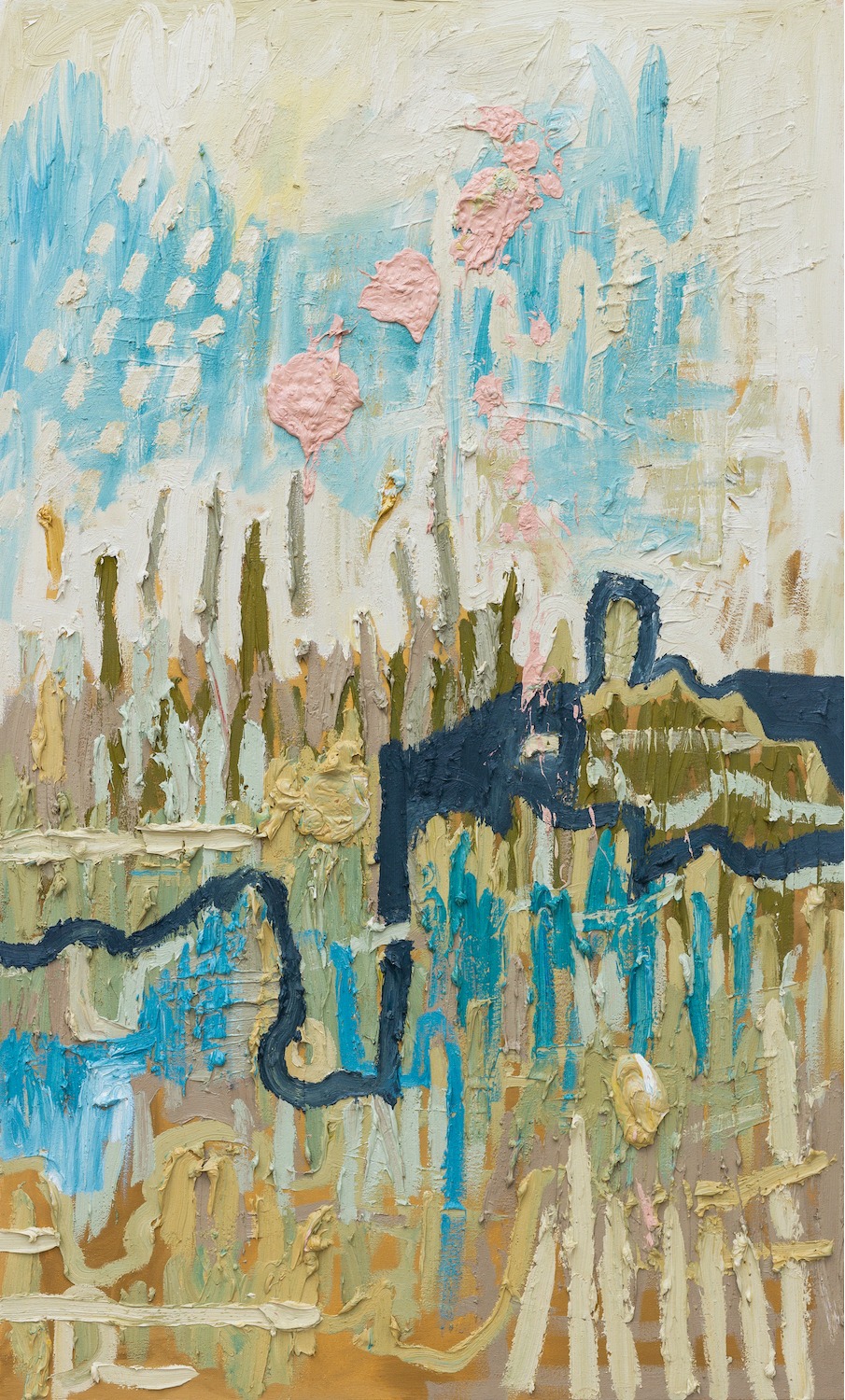









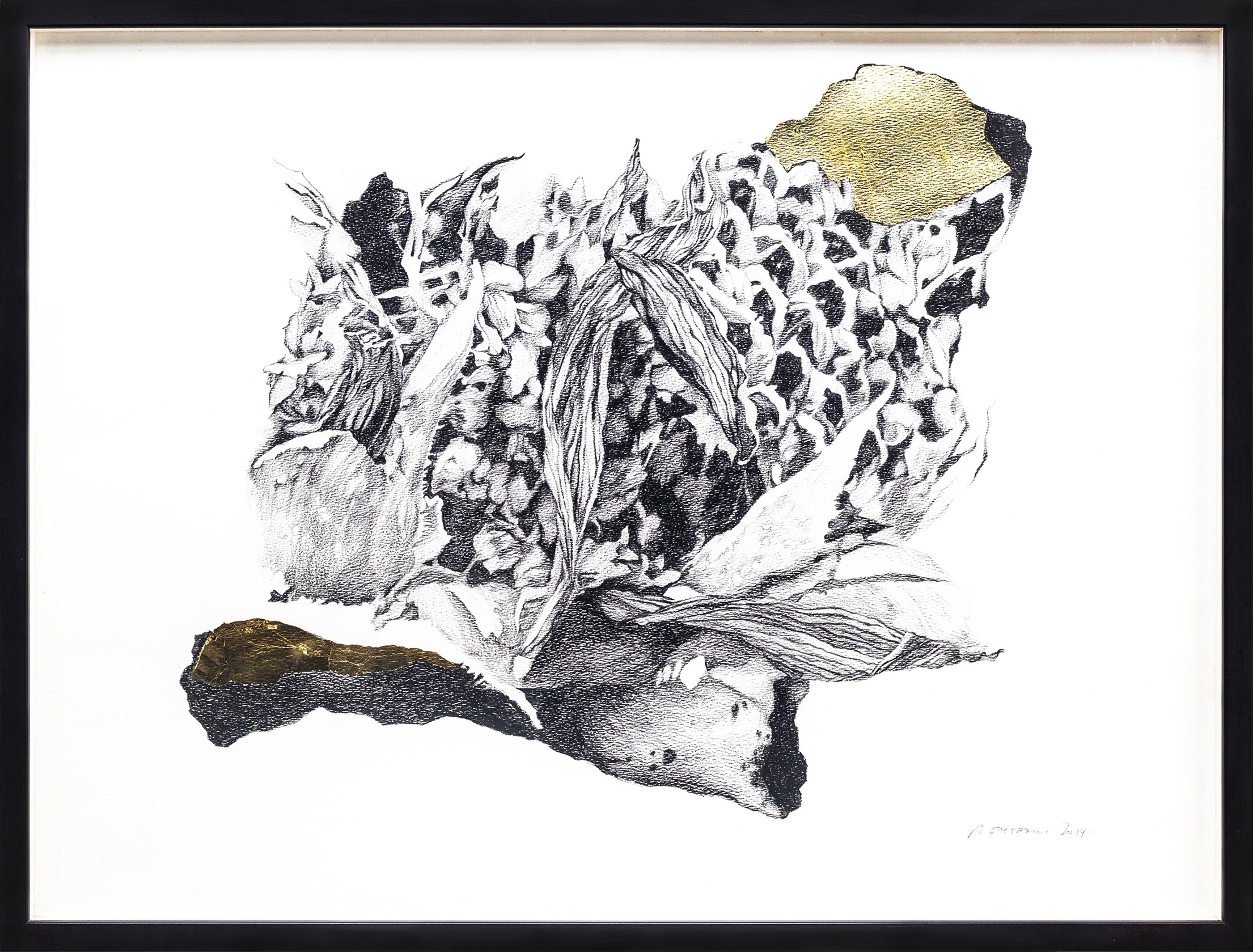
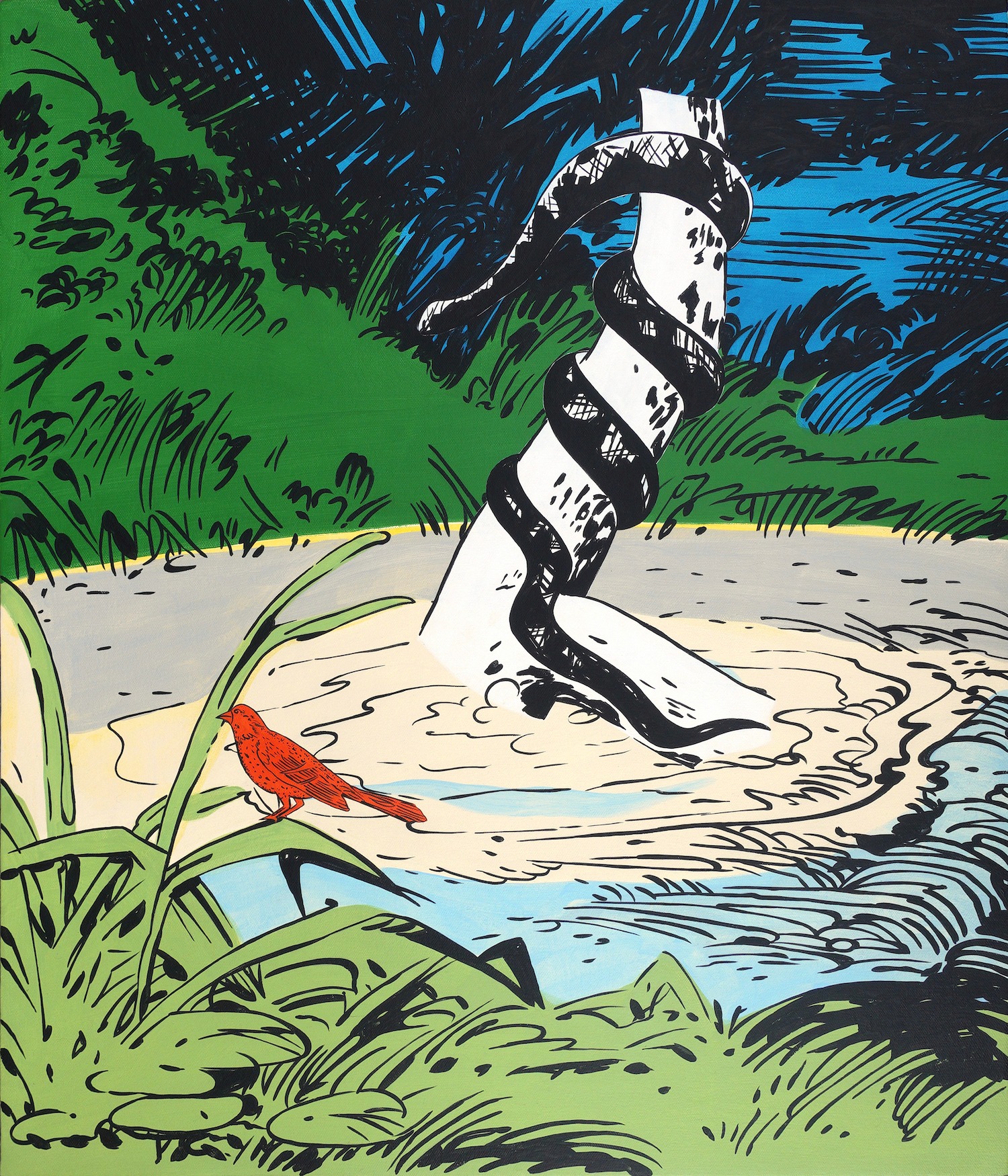
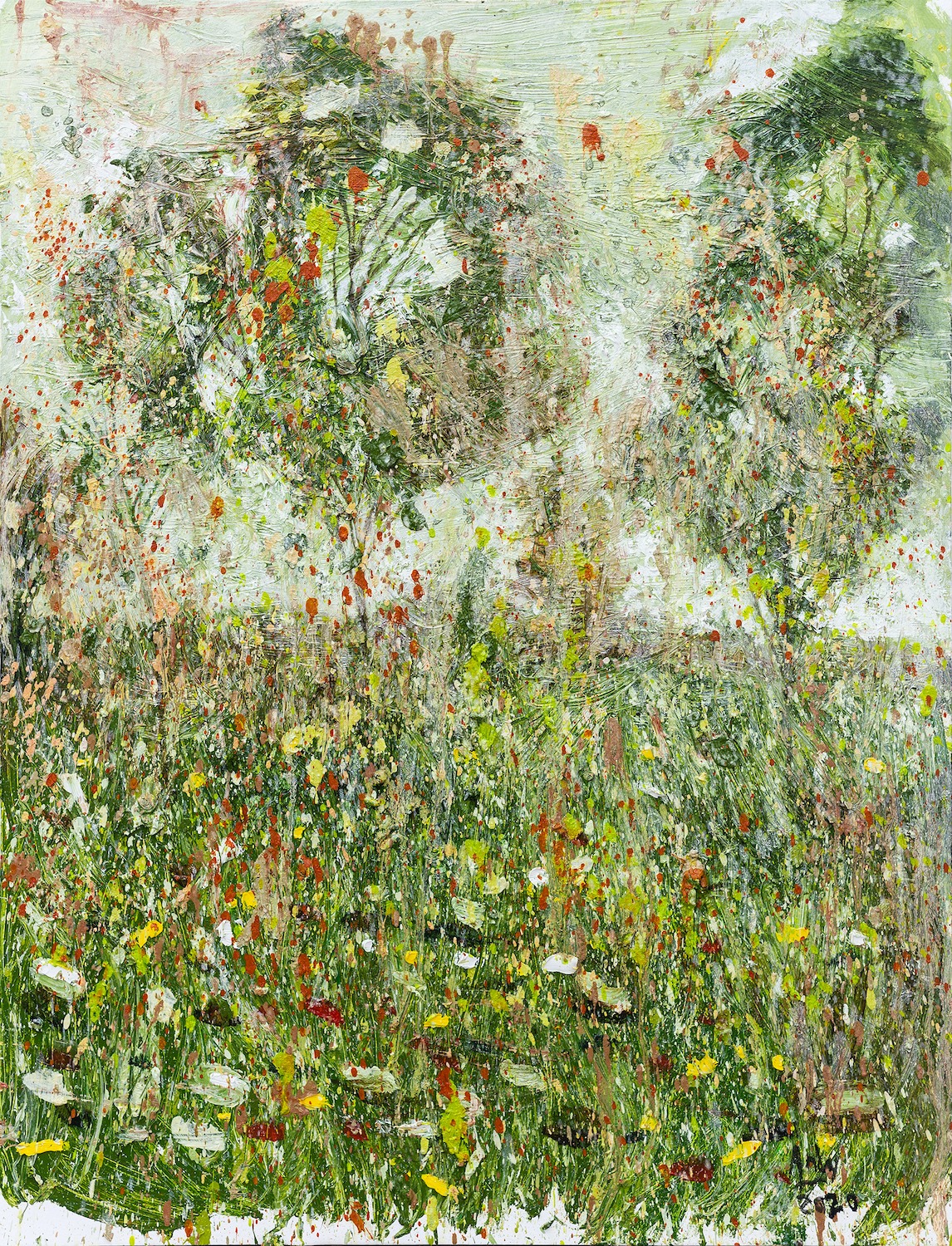
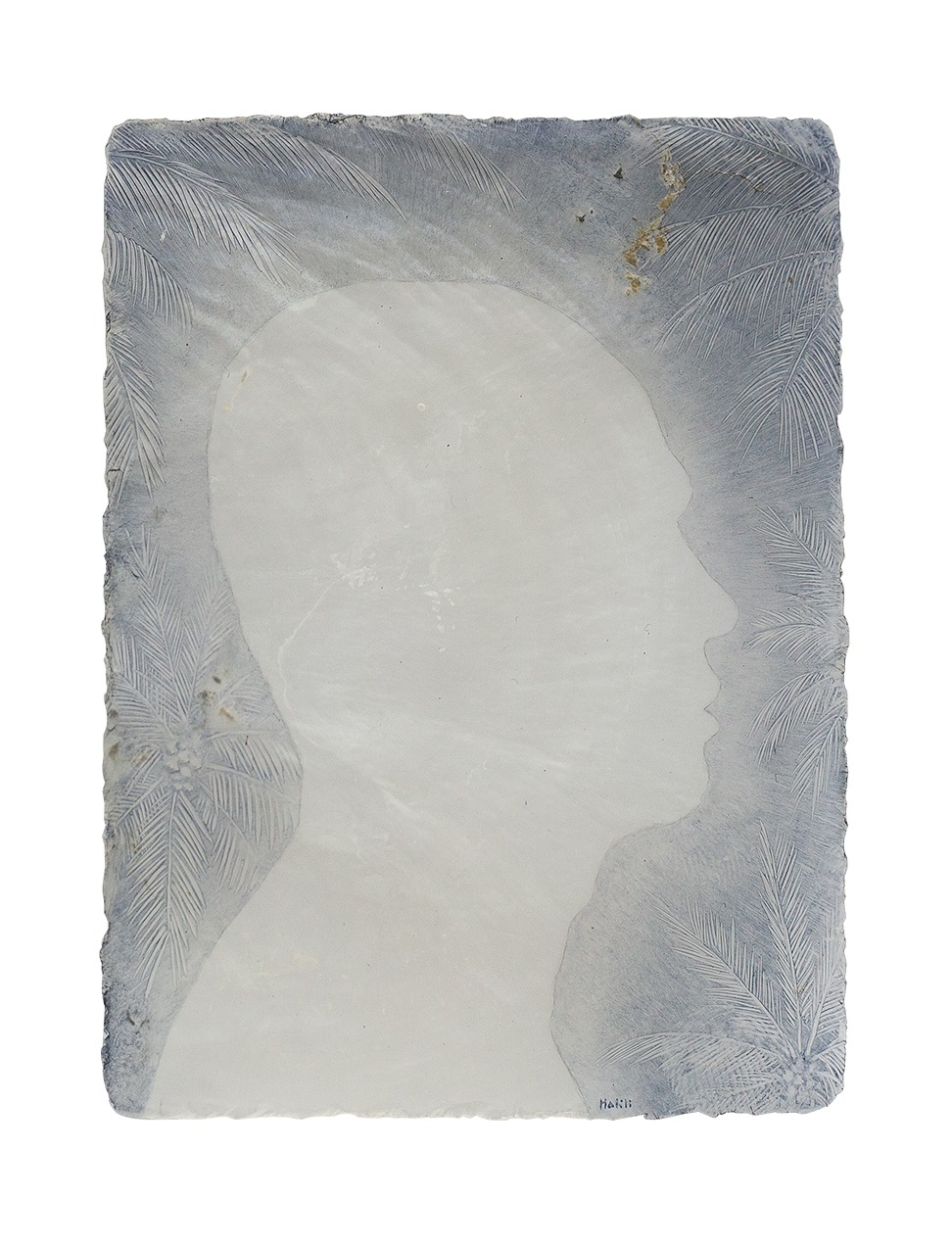
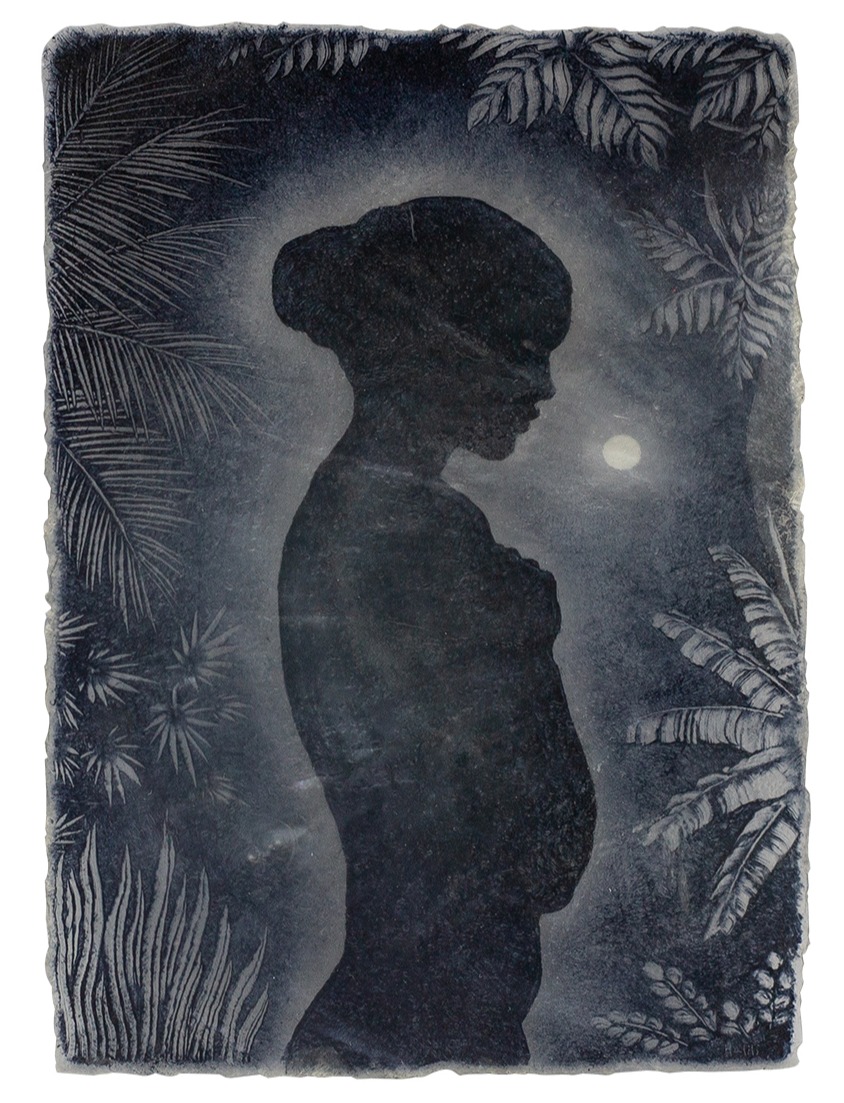


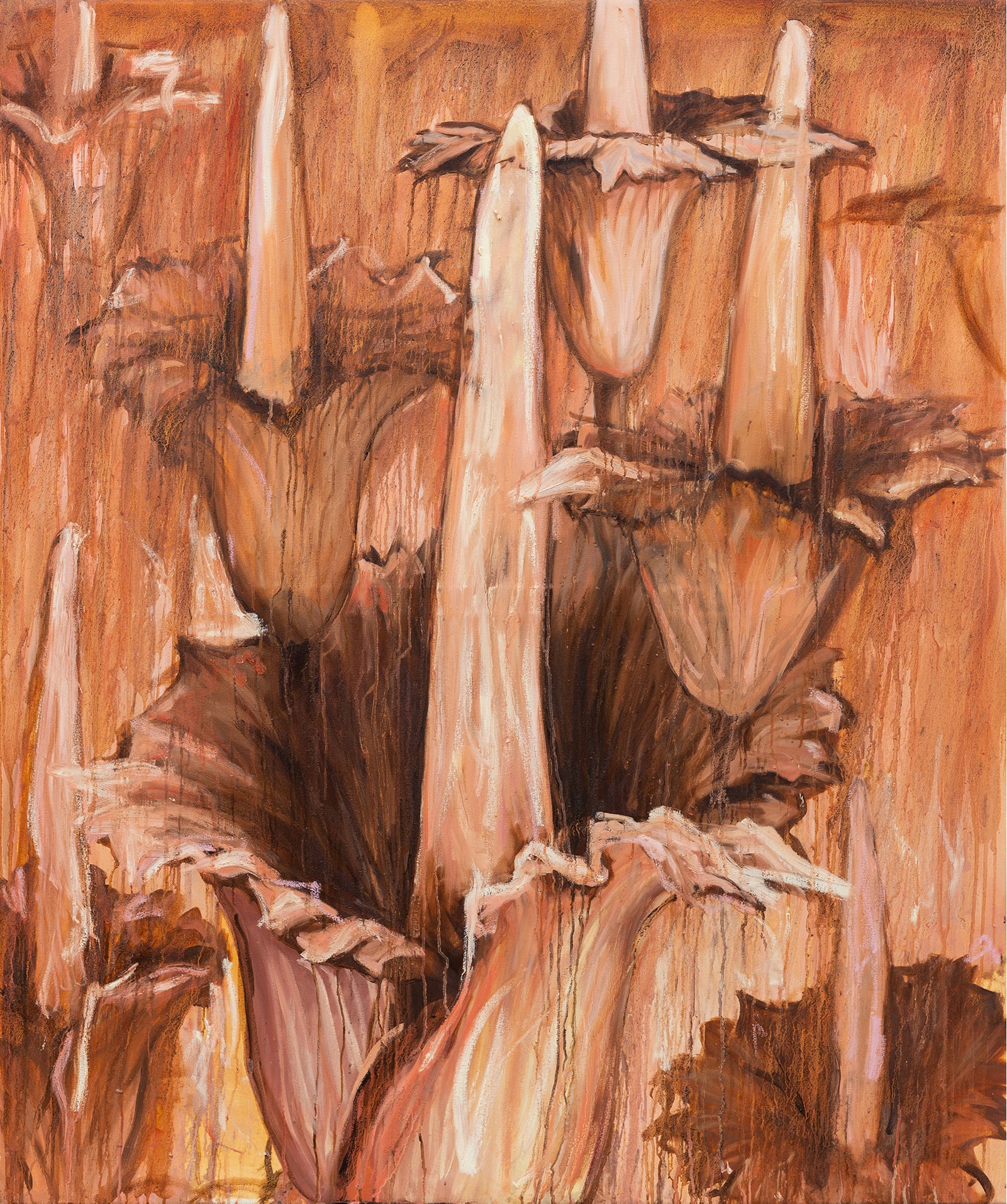
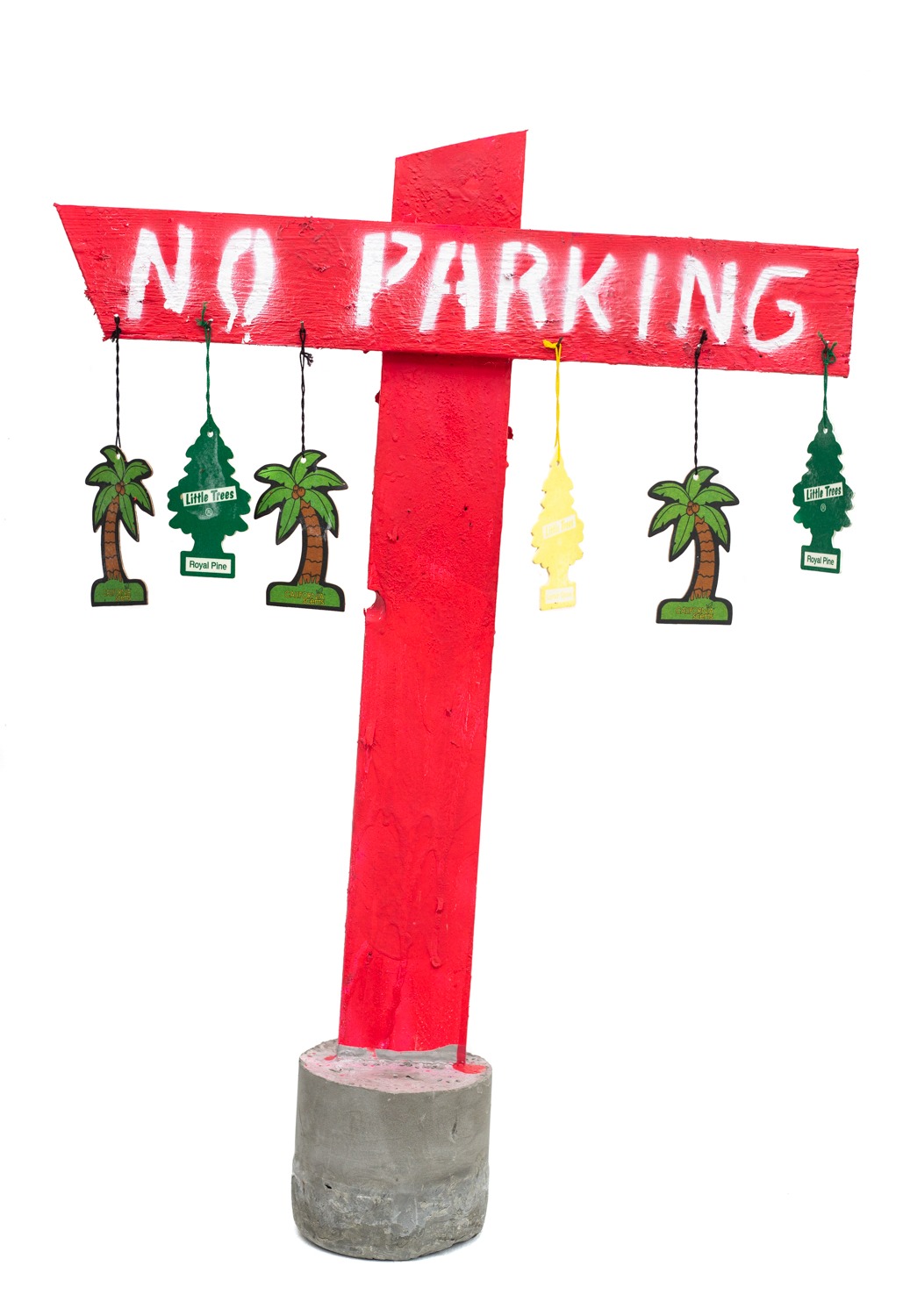
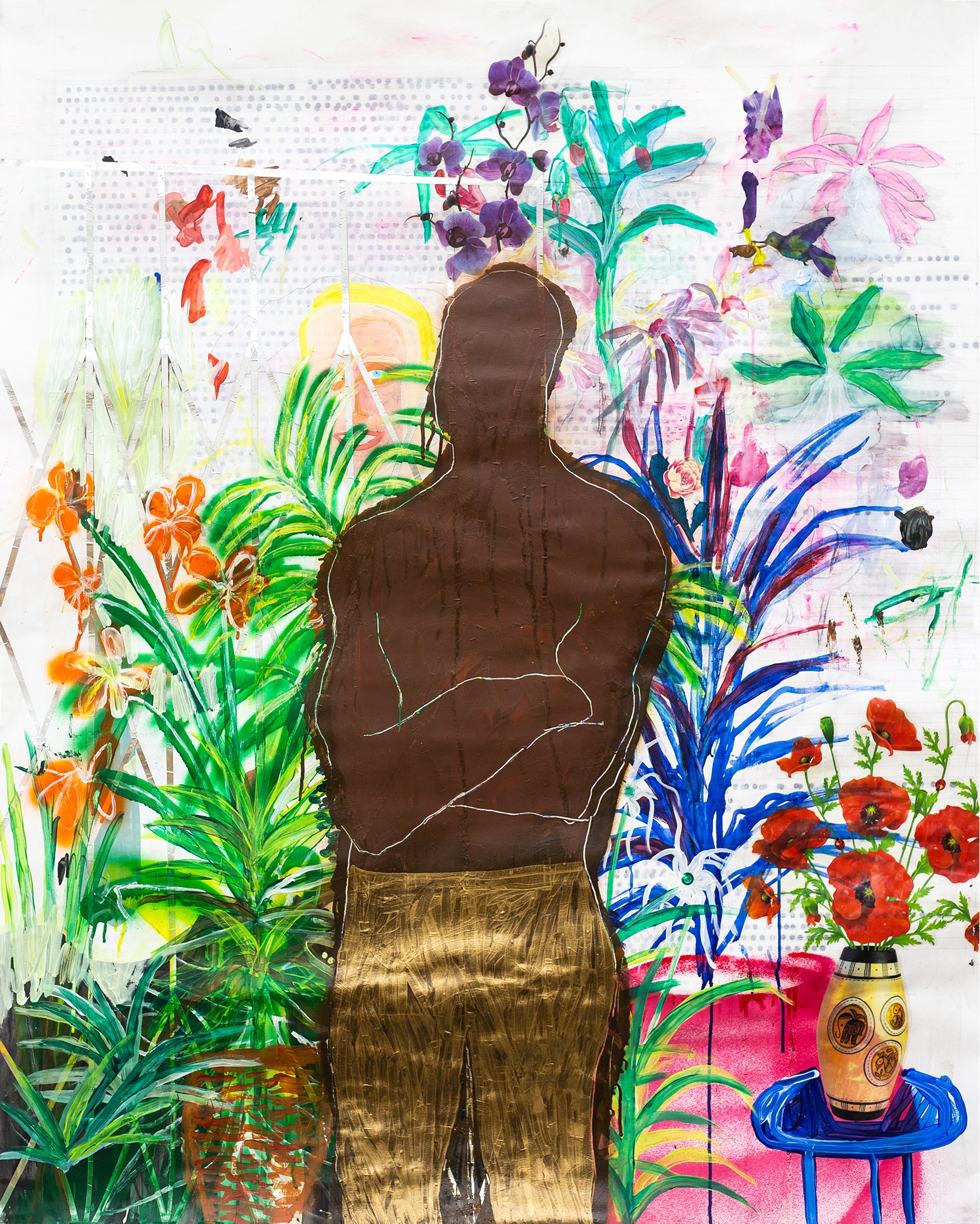

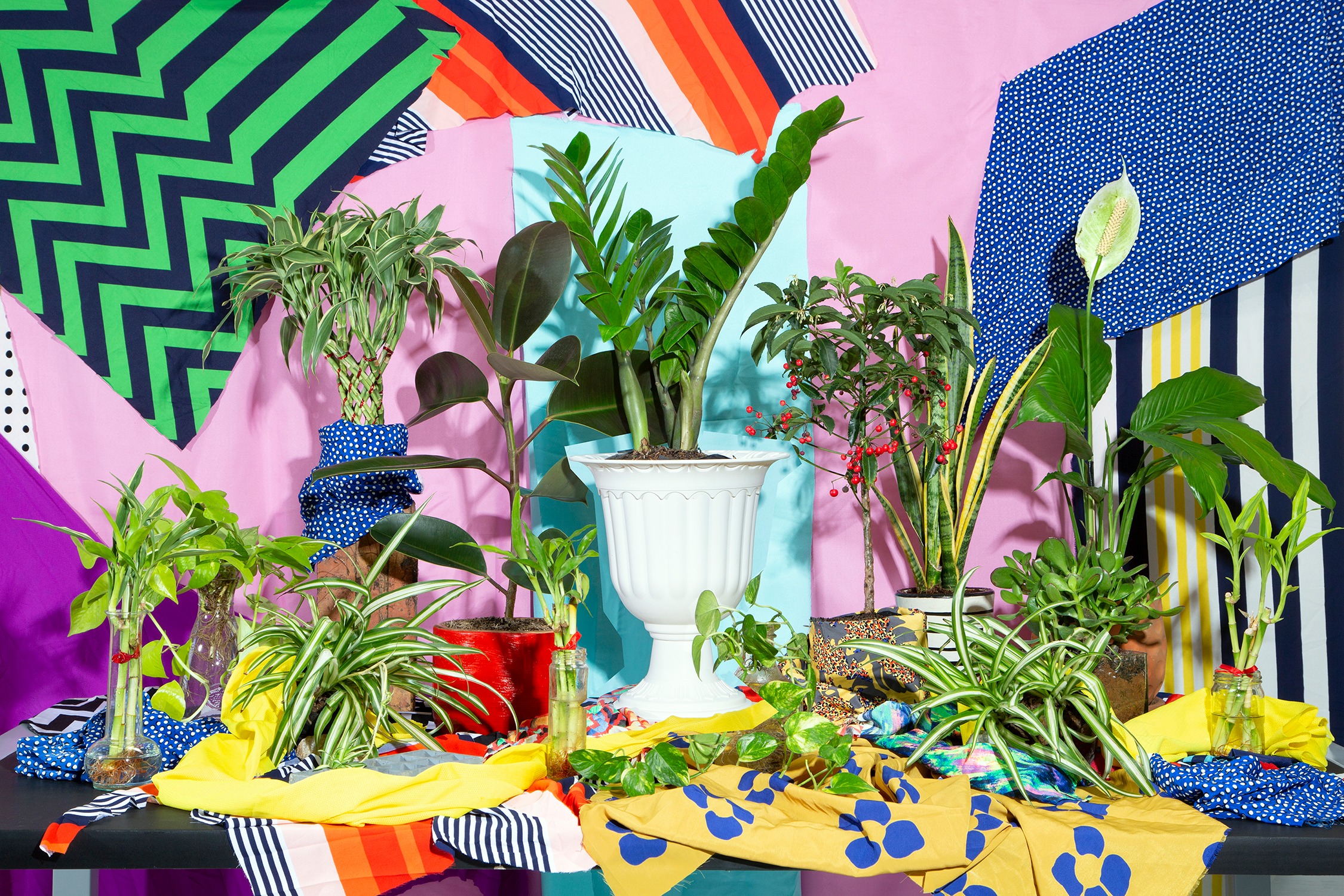
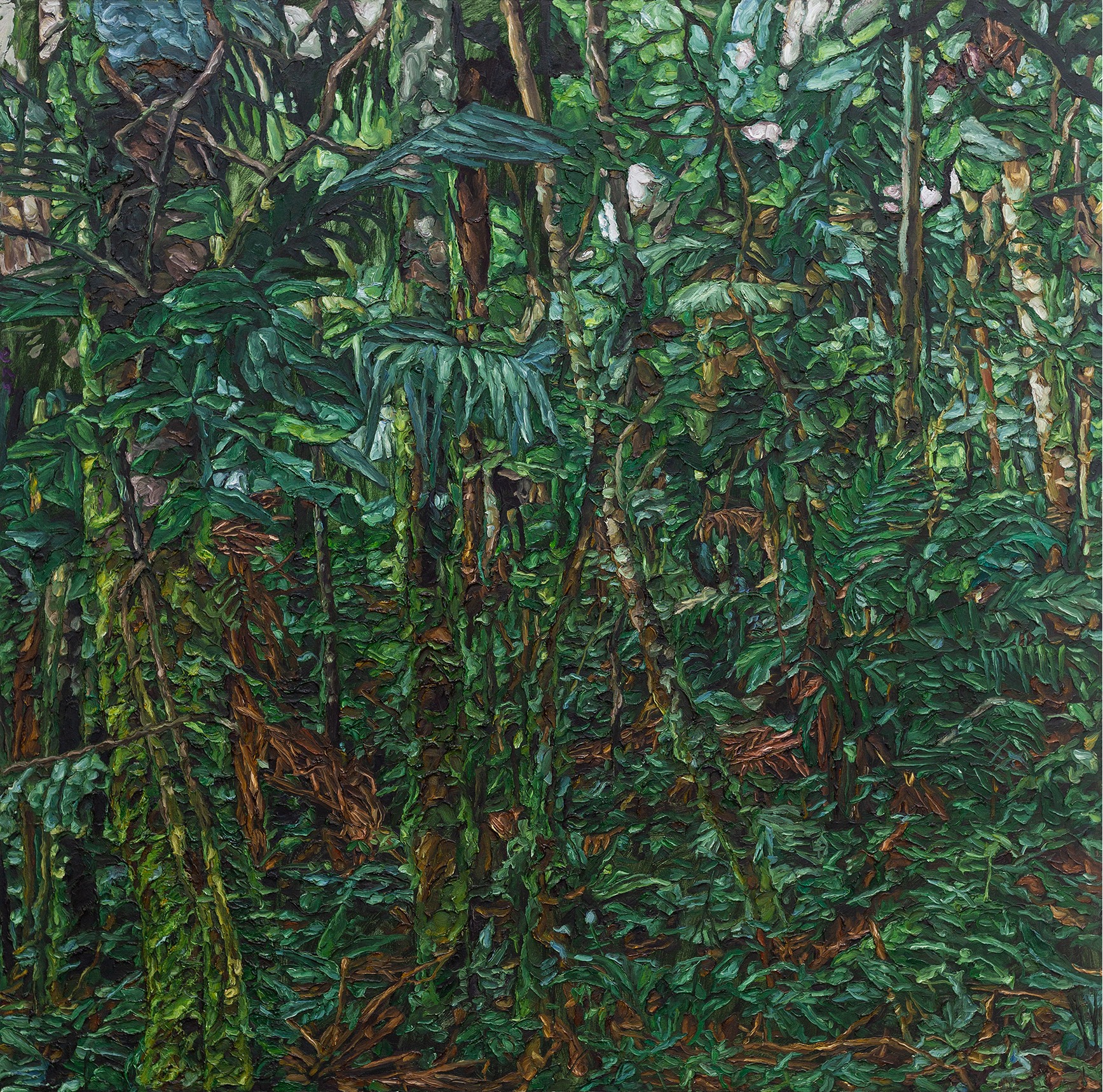
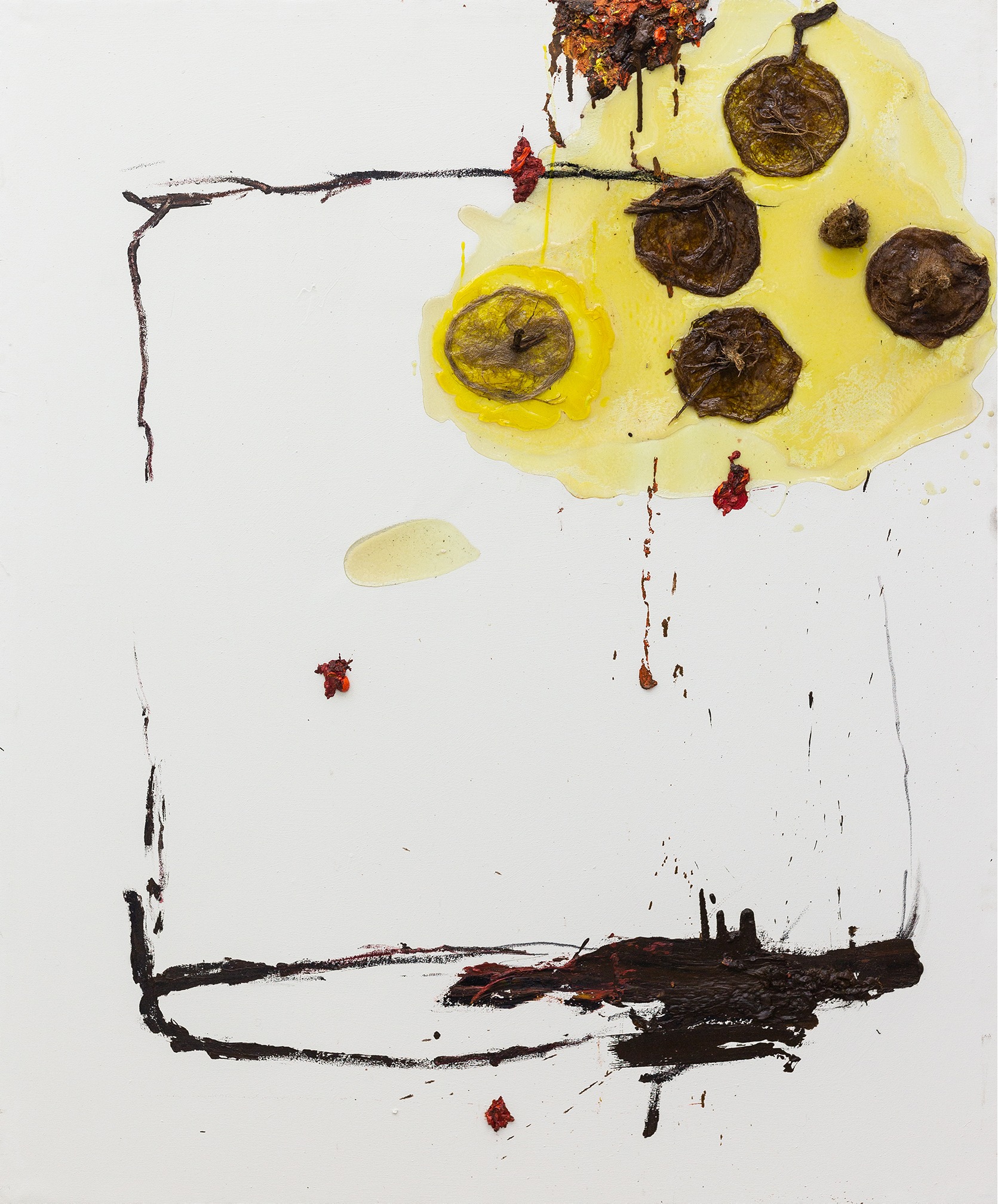





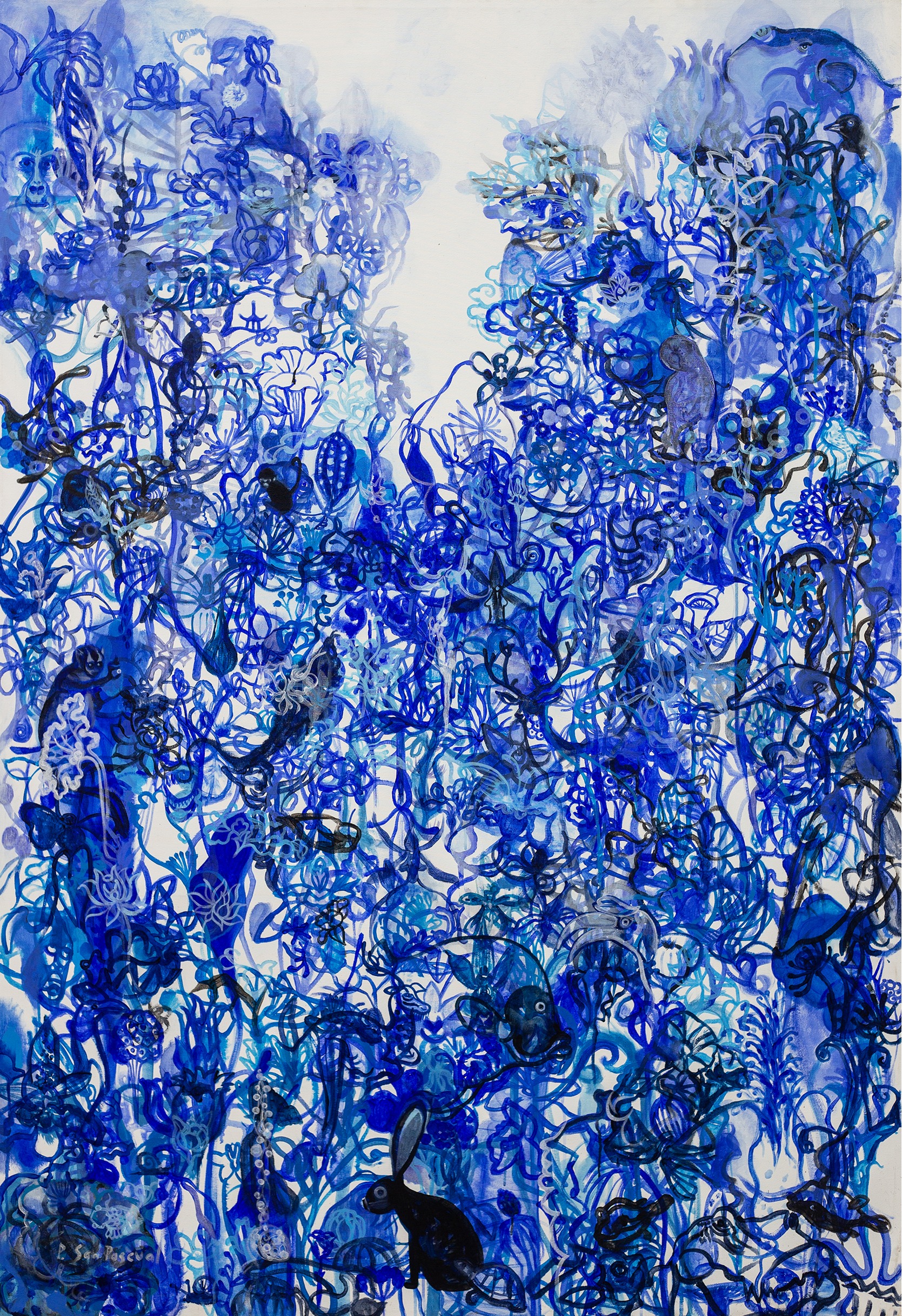
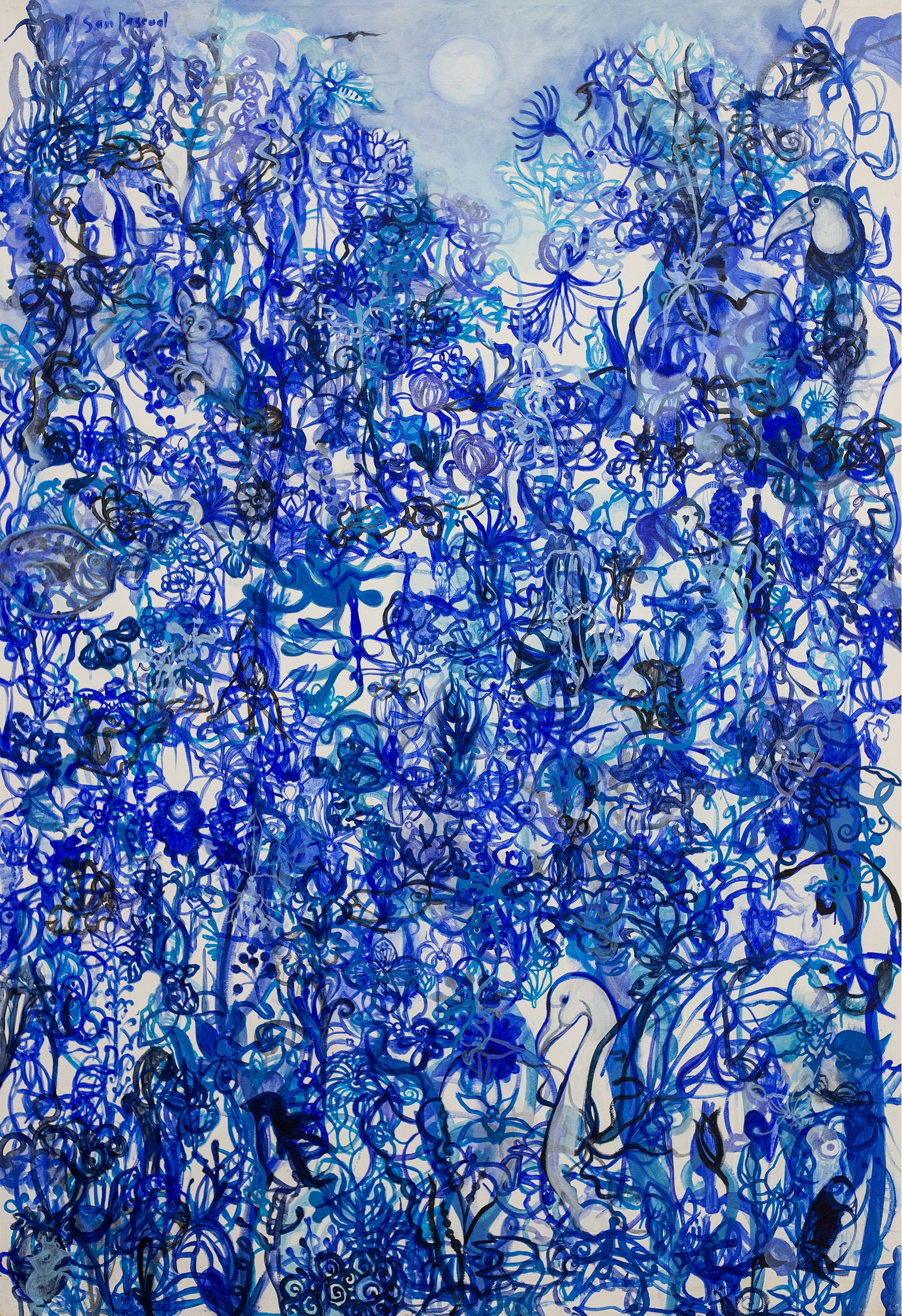
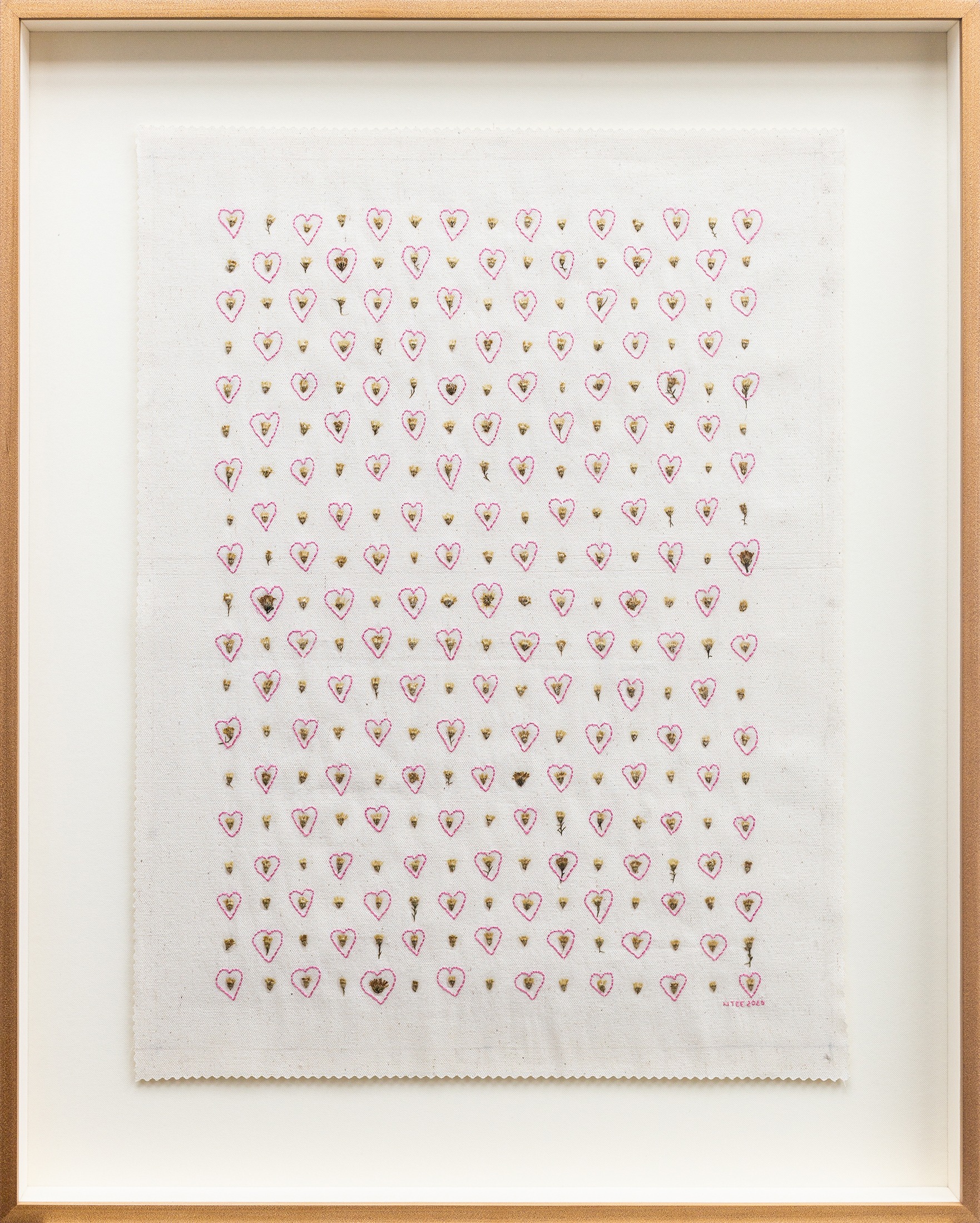
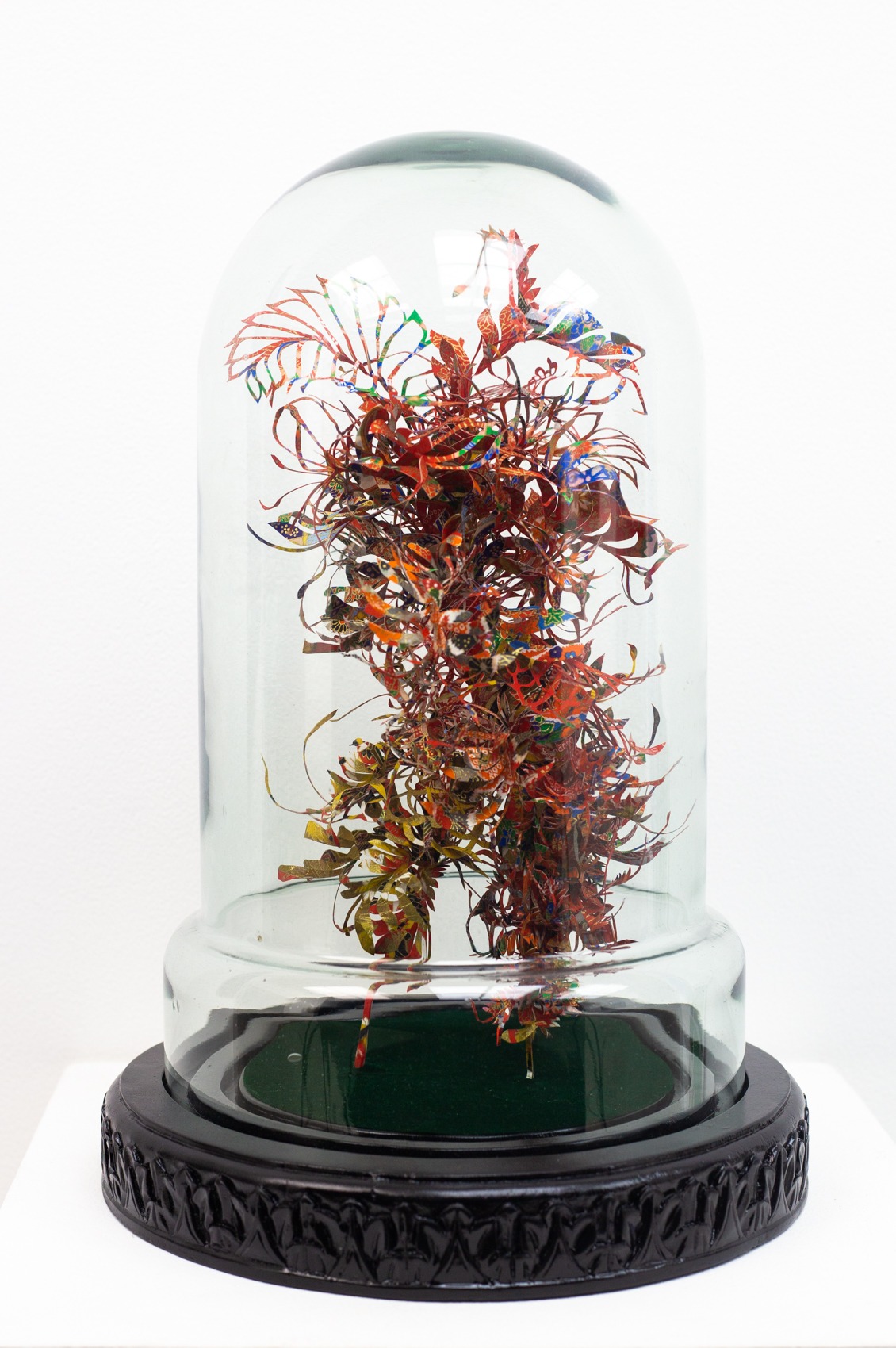

Artists









